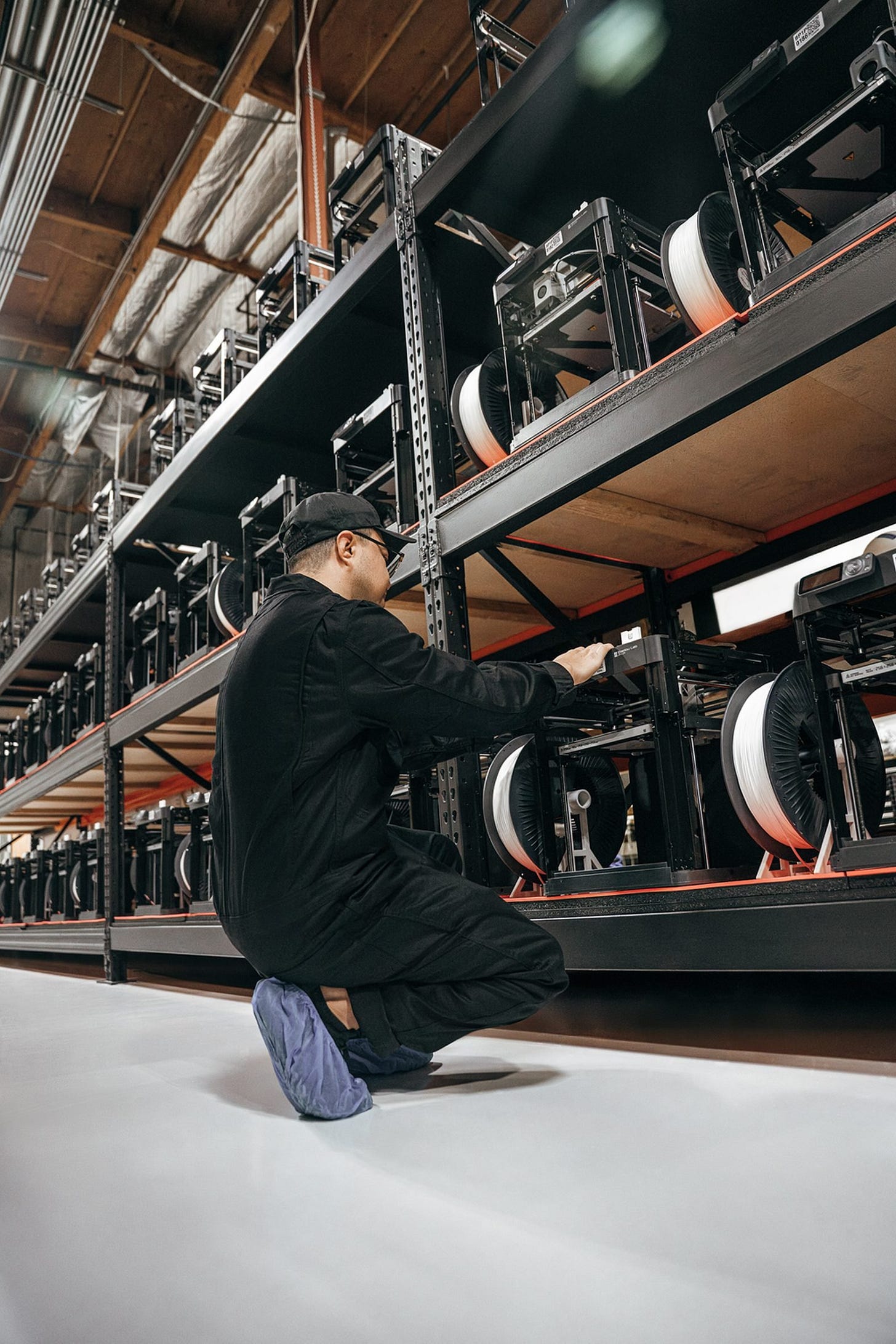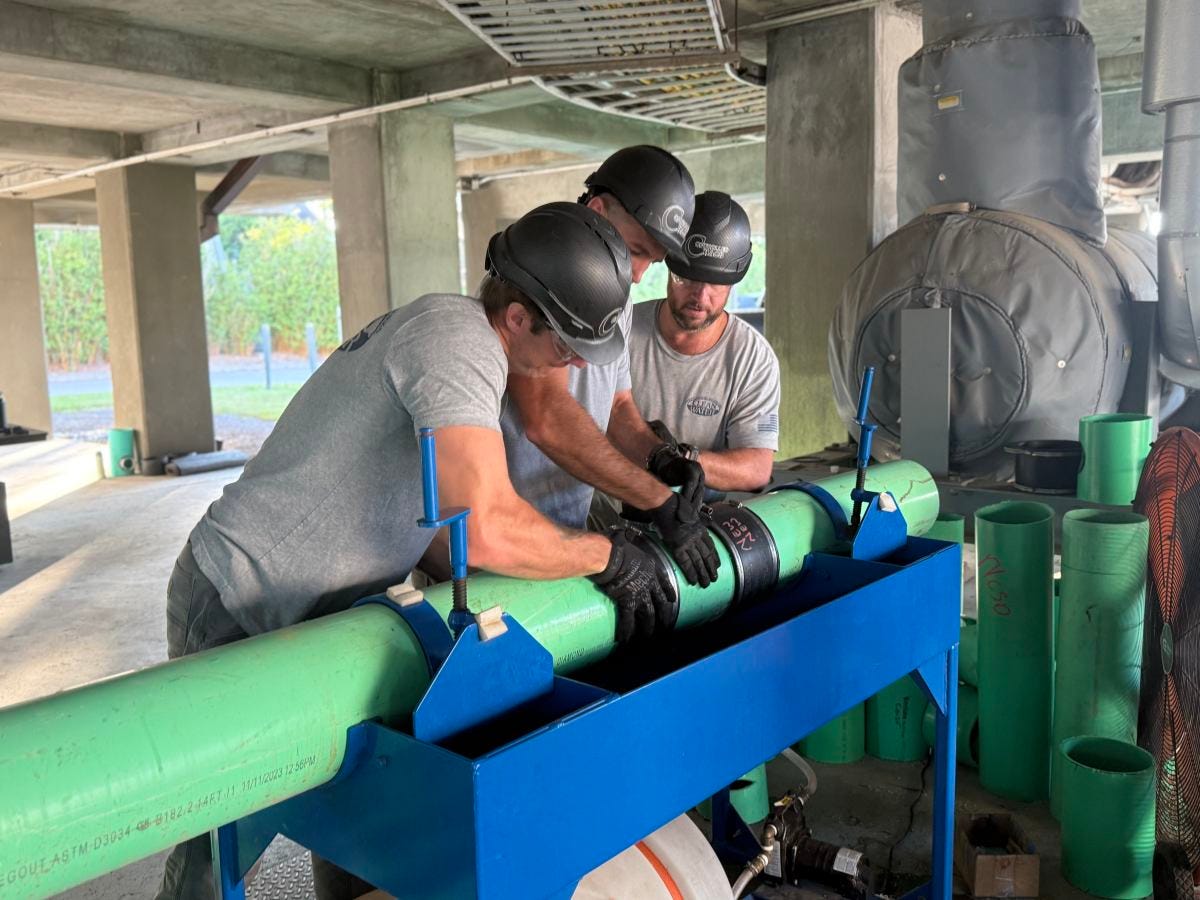HIGH MIX: VC's Risk Games, Stakeholder Capitalism and the Sewage Super Bowl
Reindustrialization news for September 22, 2025
Welcome to HIGH MIX, our weekly newsletter about the reindustrialization of the United States.
“I played a VC firm's risk game about fake drugs. It revealed unsettling truths about AI and attention.” BUSINESS INSIDER
Ever wondered if venture capital is less about spreadsheets and more about a high-stakes board game where truth is the wild card? Lux Capital's "risk games" are elaborate simulations that blend science, money, and the slippery slope of attention.
Danny Crichton, Lux's head of editorial, describes them as "thought experiments disguised as play," where participants role-play in scenarios like FDA drug approvals, competing for "attention cards" to sway outcomes.
It's a clever way to probe how misinformation and hype can warp decisions in deep tech investing.
In their September "Gray Matter" game, players embodied characters—a health policy advisor, a neuroethics professor—debating three pattern-recognition drugs inspired by real-world hits like Ozempic.
This sounds like fun, but Laurence Pevsner, a Lux research partner, ties it to broader stakes:
"All of this talk of pattern recognition is a big metaphor for how AI will help or hurt you. We're talking about nootropics drugs that make you smarter, but it's also reality, right? AI isn't literally a drug, but it's a tool that purports to do the same thing."
In the end, a European sugar pill won approval over American cognitive enhancers, not because it worked better, but because players gamed the system with attention bids.
As Crichton puts it, "People think about money markets and information environments a lot, but attention is just as valuable. It was really important to me to make attention a currency so people understand how it runs our world today."
And this mirrors VC's real-world chaos. Firms chase not just funding, but narrative control too, in a world where hype can eclipse substance. For example, a drone maker might win funding on flashy Instagram demos, sidelining quieter innovations in something prosaic (but essential) like supply chain robotics.
For VC’s, this game might reveal a key insight: deep tech investments thrive on trust, but attention economies can distort priorities.
“How the US Created a Manufacturing Base Holds Lessons for Today” BLOOMBERG
Alexander Hamilton sketched a blueprint for American industry that still echoes in today's trade debates. His 1791 "Report on Manufactures" is a timely reminder that the U.S. didn't stumble into industrial might; it engineered it with protectionism, subsidies, and strategic bets.
Protectionism as the First Brick:
The essence of Hamilton’s report: "Not only the wealth, but the independence and security of a Country, appear to be materially connected with the prosperity of manufactures." This theory eventually fueled a 19th-century boom, from Lowell's textile mills to Pittsburgh's steel empires, where protectionism shielded domestic producers from British dominance.
Hamilton's report was a radical counterpunch to Adam Smith's free-trade gospel in "The Wealth of Nations." Smith saw manufacturing as a luxury for the "rich," but Hamilton viewed it as national security—arguing for tariffs up to 50% on imports to nurture "infant industries."
By 1900, U.S. manufacturing output had surged 4,000% from 1800 levels, per historical data. The lesson? Early support—tariffs, bounties, and infrastructure—builds muscle, but it demands patience; Hamilton's vision took decades to mature.
From CHIPS to IRA, a Familiar Tune
Today's policies aren’t a one-to-one copy but they do rhyme, with the CHIPS Act's $52 billion for semiconductors and the Inflation Reduction Act's $369 billion for clean energy manufacturing echoing Hamilton's subsidies for key sectors.
Trump's 60% China tariffs and Biden's "buy American" mandates mirror the 50% import duties Hamilton advocated, and $1 trillion in factory announcements since 2021 is a surge reminiscent of the 19th-century protectionist wave.
These tools work when paired with innovation, as Hamilton paired tariffs with R&D incentives. Without support, they risk inflating costs—tariffs have already hiked steel prices 12% since 2023, per Commerce data.
Hamilton's model succeeded because it blended protection with openness—trade pacts opened markets and ensured healthy competition.
“US lighting brands "not going back to 20th-century manufacturing" DEZEEN
Three innovative U.S. lighting companies—Juniper, Gantri, and Wooj—are ditching the clunky, overseas-dependent model of old in favor of 3D printing and digital tools that promise faster, greener production.
Let's start with Juniper, the New York-based lighting firm. They're all about architectural lighting with a "parts kit" approach, letting customers mix and match components like Legos for customization. Juniper are combining injection molding for high-volume pieces with 3D printing for bespoke elements, all relocated to a Connecticut warehouse for in-house control. This hybrid setup cuts the chaos of global shipping—parts no longer bounce from China for electronics, Canada for finishing, and the U.S. for assembly. Their lamps now ship in days, not weeks, and waste was reduced by 30% through on-demand runs.
Gantri, out of California, just opened a massive factory in the Bay Area packed with over 1,000 3D printers. Their Gantri Made platform lets creatives submit designs for bulk printing, turning ideas into products in hours. 3D printing uses less material than injection molding, which requires $2,000 to $100,000 molds per design, which is great for sustainability and their lamps are made from recycled ocean plastic, each piece unique yet produced at scale. The factory's robotics and software orchestration mean no more overseas sweatshops; it's all local.
Wooj's Greenpoint studio, with a dozen 3D printers, specializes in on-demand lighting from recycled plastic filament like PLA and PETG. Their sculptural lamps print in hours, minimizing waste compared to traditional methods. Founder Sean Kim emphasizes, "Additive manufacturing is often touted as more sustainable than, for example, injection moulding, but the bottom line is – you're still making stuff, and there's still waste." Wooj's approach—printing only what's ordered—cuts overproduction by 70% and attracts eco-conscious customers.
The trio’s story is a snapshot of a manufacturing shift that's accessible and inspiring. These brands aren't waiting for big factories, they're using 3D printing to make "Made in the USA" customizable, sustainable, and fast.
“People-centered supply chains for the win” FAST COMPANY
Imagine your favorite coffee chain suddenly deciding to source its beans only from farms where workers have access to fair wages, clean water, and training to use eco-friendly tools. Sounds ideal, right? That's the essence of "people-centered supply chains," a term thrown around in boardrooms but often lost in translation.
Big companies can make their operations more sustainable by focusing on the humans in their supply chains—especially the workers at small businesses that do the heavy lifting. Treating the people who grow, make, and ship your products as partners, not cogs, creates a system that's better for everyone, from the factory floor to the climate.
"MSMEs" are micro-, small-, and medium-sized enterprises. These are the mom-and-pop shops and family-run factories that make up 90% of businesses worldwide, according to McKinsey. They're the backbone of global supply chains, supplying everything from phone parts to clothing. But these small players often lack the cash or know-how to switch to green tech, like energy-efficient machines or low-carbon materials. The result is that they get squeezed out when big corporations like Nike or Apple demand "sustainable" suppliers, leading to canceled contracts and job losses.
Supply chains touch everything we buy, and when big companies ignore the people at the bottom, it leads to messy problems: factories closing, workers losing jobs, and more pollution because cheap, dirty methods stick around.
The proposed solution in this case is really just "stakeholder capitalism," a fancy term that, in practice, means companies investing in sustainability-focused supplier training. This approach could cut global emissions by 1-2 gigatons by 2030 if big companies invest in their suppliers, per the World Resources Institute.
I have no real frame of reference for a gigaton of pollution but I’d imagine it’s a lot. For the average person, it means cheaper, greener products—your next phone or shirt made with less pollution and fairer wages.
“‘We’re Trying to Be No. 1 in the No. 2 Business’: Inside the Sewage Super Bowl” WALL STREET JOURNAL
Step into Chicago's "Sewage Super Bowl"—the nickname for WEFTEC, the Water Environment Federation's annual conference, and you'd find 15,000 wastewater pros turned gladiators.
It's a spectacle: teams from all over race to repair pumps, "rescue" dummies from manholes, and troubleshoot sludge-thickened pipes, all while cheering crowds munch on "poo"-themed snacks. It’s a lighthearted counterpoint to the industry's foul reality.
The events are skill drills for the $300 billion U.S. water sector, where equipment like pumps and valves is a $50 billion market, per the Water Research Foundation.
Competitors from utilities like the Sacramento Area Sewer District (SacSewer) fix submersible pumps in under 10 minutes, a nod to the 20% failure rate that costs municipalities $1 billion yearly in downtime. Manhole rescues simulate confined-space hazards, training for the 1,000 annual incidents reported by OSHA. And the pipe-clearing challenge spotlights innovations like robotic cutters from companies like Spartan Tools, which use AI to navigate blockages without digging up streets.
These events foster skills for handling surprisingly advanced tech, like sensor-equipped valves that detect leaks in real time.
The wastewater industry, employing 1.2 million and projected to grow 3% annually through 2030 per BLS data, relies on U.S.-made gear from firms like Xylem and Pentair, which supply 60% of municipal pumps. Reshoring wastewater equipment, bolstered by the $55 billion Infrastructure Investment and Jobs Act, could add 50,000 jobs by 2030, per the American Water Works Association.
I’d attempt the “sludge-thickened pipe challenge” but unfortunately I have a sludge allergy.
“A Classic Guitar Maker Gets a Boost from the Manufacturing Extension Partnership” ALLIANCE FOR AMERICAN MANUFACTURING
In 2019 the Gallagher Guitar Company—born in 1965 and once the strummer of choice for bluegrass legend Doc Watson—teetered on the brink of silence until a couple with a passion for acoustic heritage scooped up the faltering family-owned brand.
Their plan? An incubator called the Tennessee Manufacturing Extension Partnership (TMEP), a no-cost lifeline from the University of Tennessee Center for Industrial Services (UTCIS), backed by the U.S. Department of Commerce's MEP network.
The MEP magic unfolded through lean manufacturing basics—classroom sessions followed by hands-on floor tweaks that slashed hours per guitar and raised monthly output from a trickle to a steady beat.
"We were boosted by working with the University of Tennessee Center for Industrial Services (UTCIS) through their Manufacturing Extension Partnership program. We learned about lean manufacturing," the Mathises shared, crediting the program for transforming antiquated processes into efficient flows.
Material handling streamlined, waste minimized, and production ramped up, all without the overseas shortcuts that tempt so many.
"We’ve certainly had individuals tell us the way we can offer more affordable guitars is to have it built in China or Korea or elsewhere. But it’s important for us to maintain this company and being uniquely American," David Mathis affirmed.
“The Southeast is leading EV and battery manufacturing in the U.S., but Trump’s energy policies may slow that growth” WFAE
The Southeast is a powerhouse trio of Georgia, North Carolina, and Tennessee ranking among the top four states for EV and battery manufacturing, outpacing even Michigan in sheer dollar flow.
The region also pulls in slightly more than half the national average in public clean energy funding, so naturally the February pause on the National Electric Vehicle Infrastructure (NEVI) program—$5 billion nationwide for EV chargers, including $109 million for North Carolina—has stalled progress. Add the potential repeal of clean energy tax credits, and EV sales could dip, especially as market contractions already bite.



